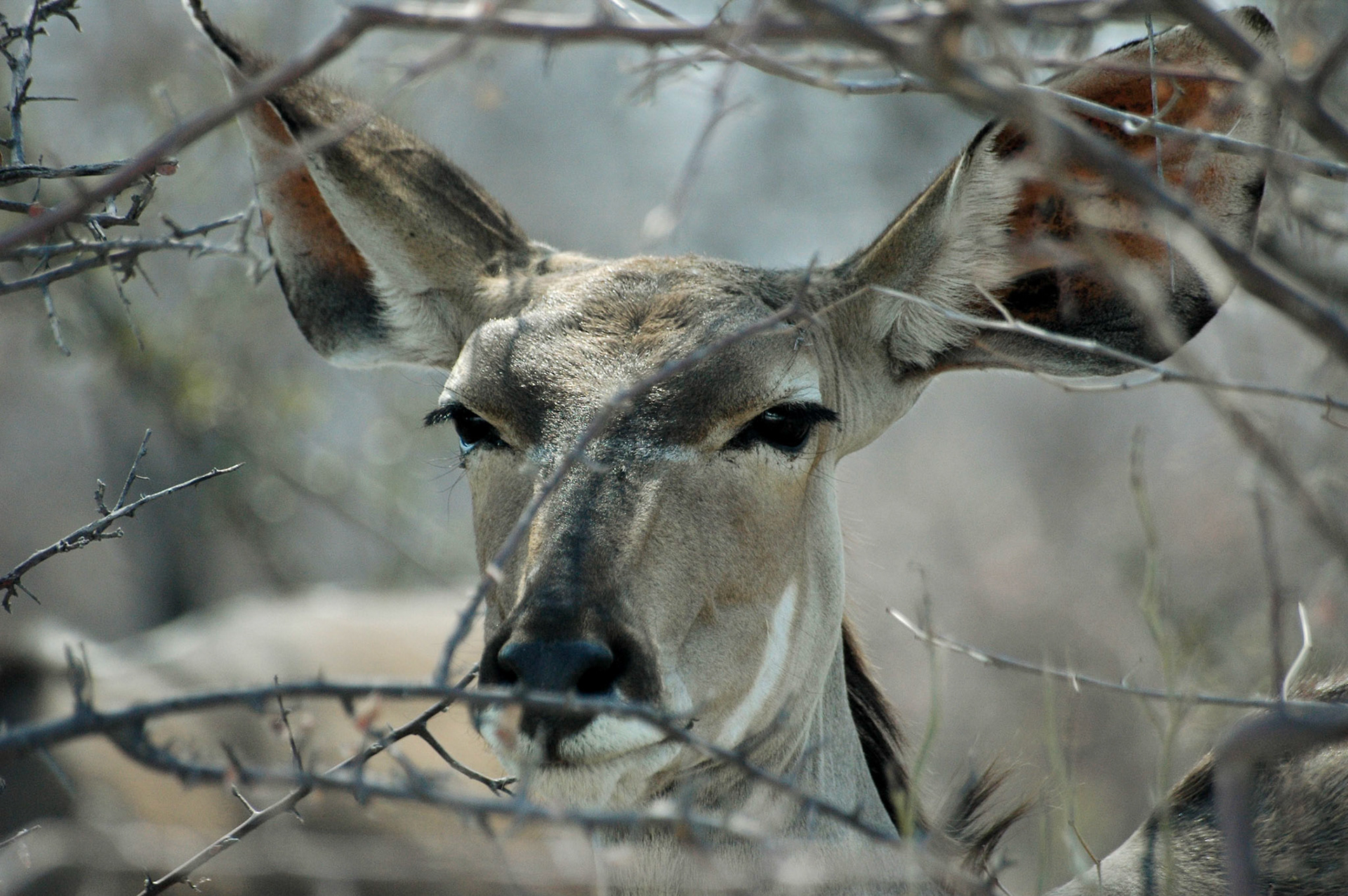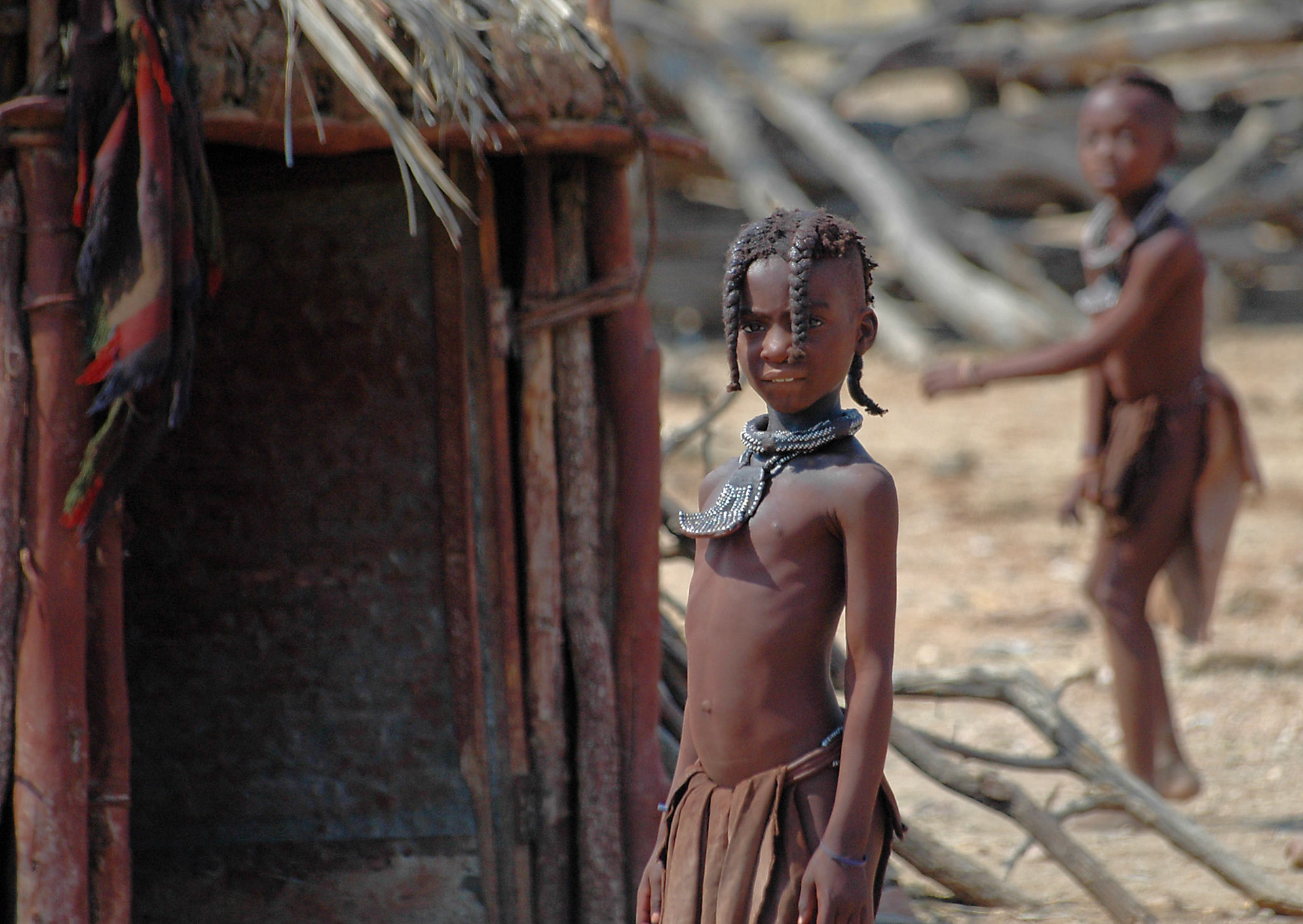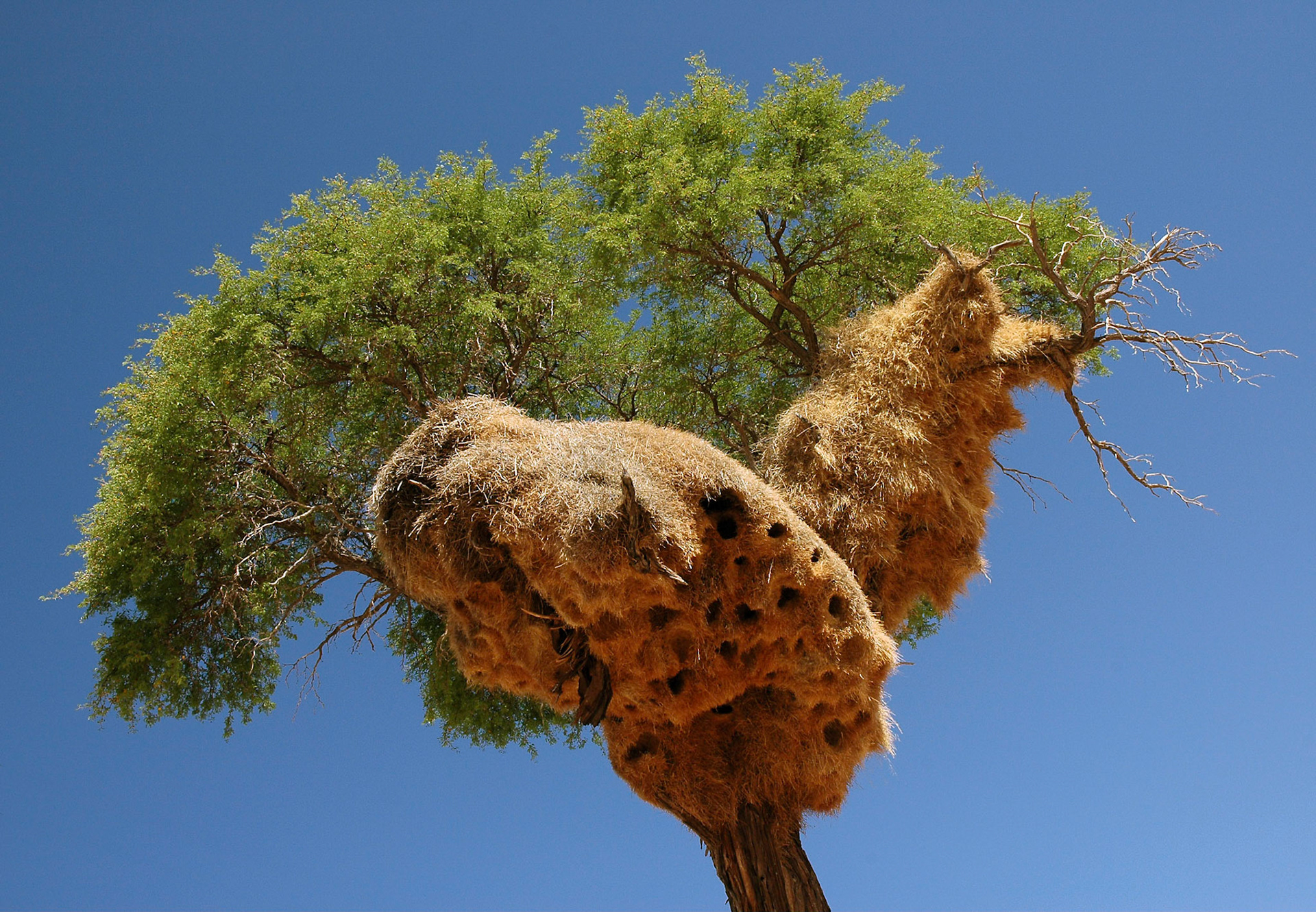Namibia is still relatively unknown to tourist masses but hides incredible treasures: amazing wildlife, diverse tribal populations and infinite landscapes in a galaxy of light and colors.

Etosha National Park, with its 4731 square kilometers, hosts some of the most varied and amazing wildlife I've ever seen. Here a Gemsbok in the middle of Burchell's Zebras.

A Mongoose takes a peek from behind a rock. The vast and apparently desert landscape of Etosha is in reality full of wildlife.

A female Kudu hides in the bushes. I was extremely pleased by the performance of my Sigma telezoom which allowed amazing closeups such as this one.

The Elephant remains in my opinion one of the most impressive animals in the savanna. Its apparent calmness hides intelligence and power.

Etosha, and Namibia in general, is home to an immense number of birds. Here I had the privilege of shooting a Sparrowhawk near its nest.

A Yellowbilled Hornbill resting on blambles at sunset. When the sun lowers on the horizon the stark white light present most of the day leaves place to warm colorful reflections.

I was overwelmed with emotion at my first sight of a Lion and my excitement remained high during the numerous other encounters Etosha had reserved me.

This magic image in the Kunene River Valley is just one of the once-in-a-lifetime experiences Namibia offered me. The light, the dust, the trees all blended together beautifully.

The north of Namibia is home to the Himba, a proud and discreet tribal population I wish I had time to know better.

Himba women cover themselves with a mixture of butter, ashes and ochre which results in a beautiful skin and a strong stirring smell.

The desert coast of Namibia is an unearthly and unfriendly environment but has interesting wildlife. Here a Seal at Cape Cross Reserve.

Moving inland from the foggy coast you get to see stunning sunsets. Yet other color variations in the Namibian palette...

Spitzkoppe is the most famous peak in Namibia. Climbers from all over the world attempt its difficult walls but just the sight of it is enough to thrill me.

The country is characterized by incredible geological formations. Here strange rocks at Spitzkoppe glowing from early morning light.

From time to time you get to see bizarre things, whether it's an imposing termitary or an incredibly large bird nest like this one.

The Namib Desert is probably the most magic landscape of all. The reassuring beauty of sand, changing color under different light conditions, is simply wonderful.

The sun produces extremely hot temperatures all year round. Occasional refreshment can be found only underground like here in Sesriem Canyon.

The land is an elaborate composition of sand dunes and river-beds that end in dry calcareous puddles. Here an aerial view of Sossusvlei.

The wind continuously models dunes and produces elegant patterns like this one at Dune 45 near Sossusvlei.

A lonely road leads to Brukkaros Crater. The majority of roads in Namibia are in reality dirt tracks, adding to the adventure of the trip.
Shot during summer 2005 with a Nikon D70 reflex and Nikkor AF-S DX 18-70, Sigma APO Macro Super II 70-300 lenses.